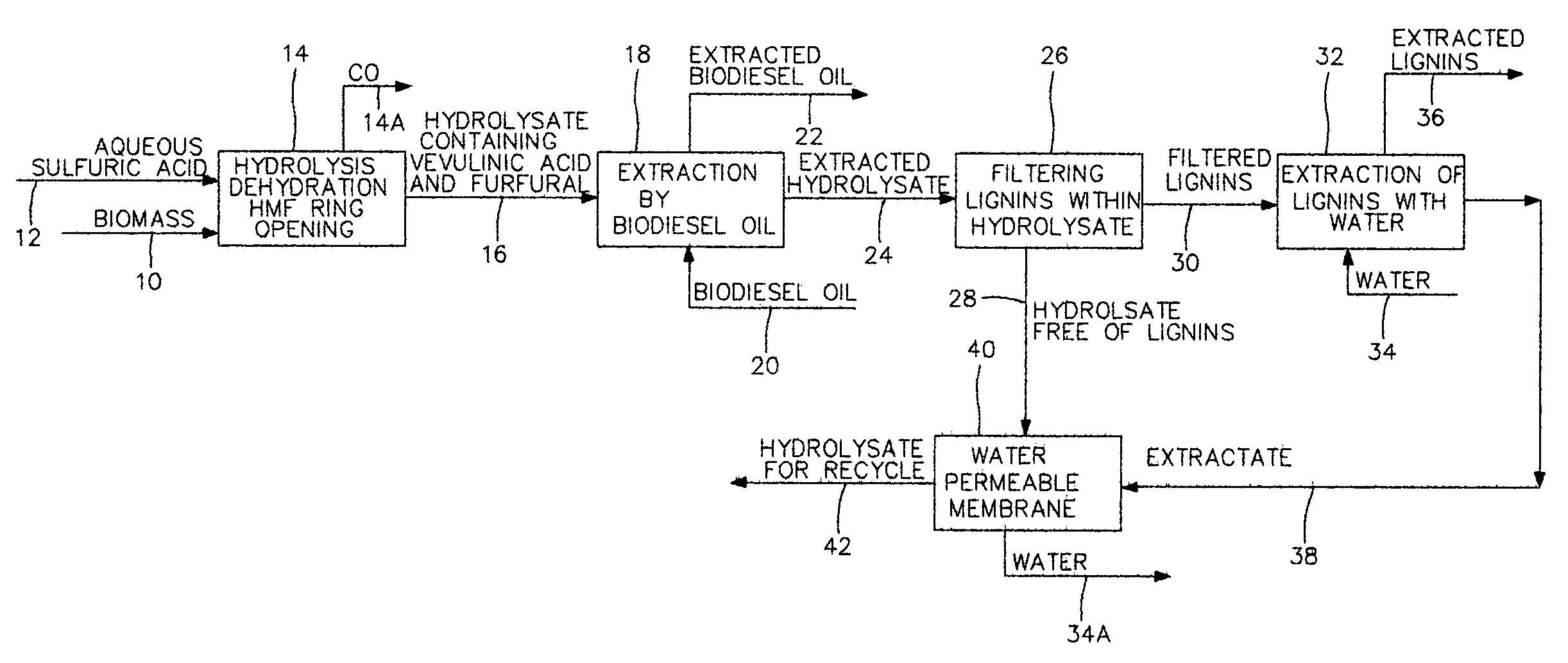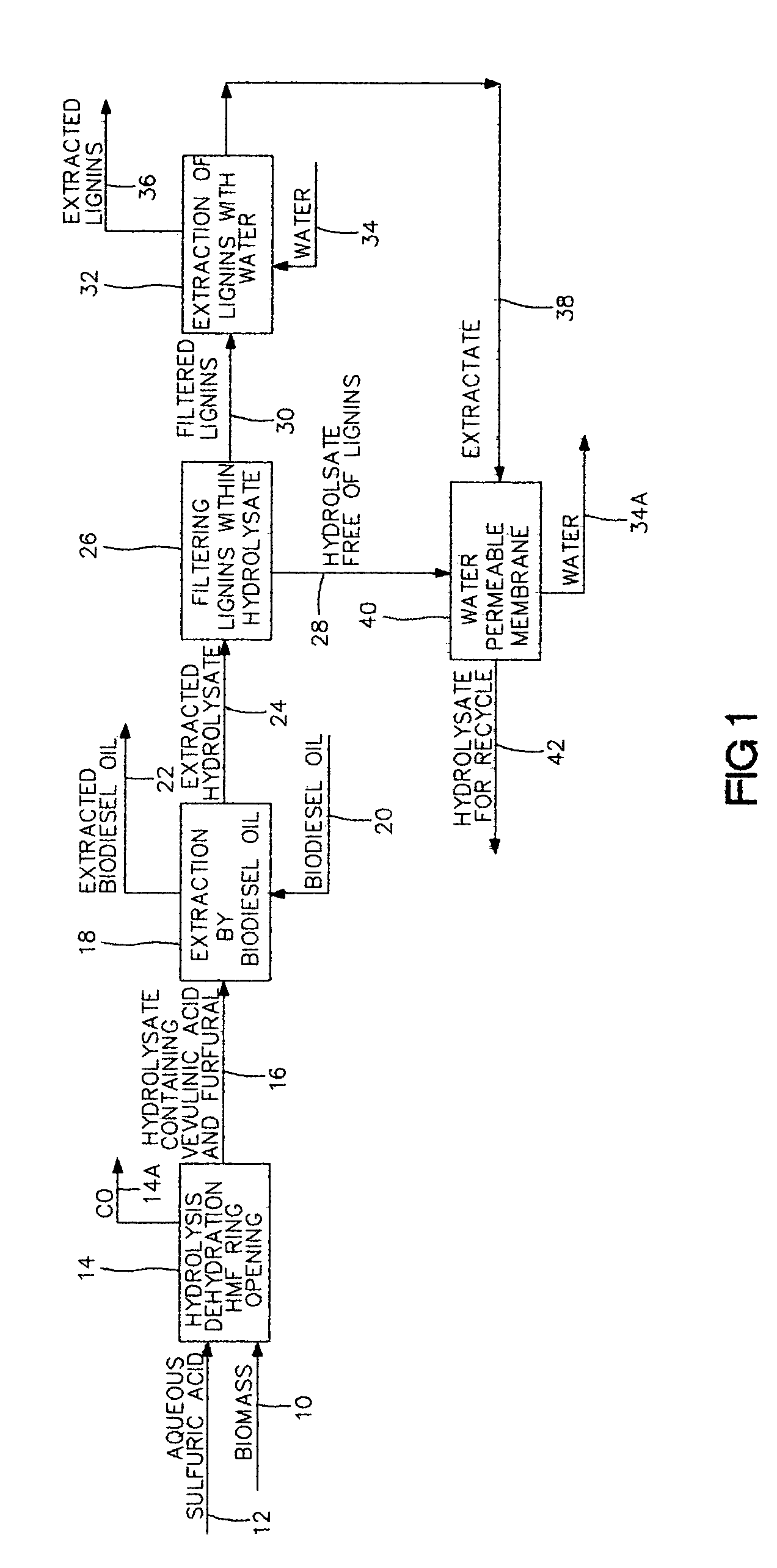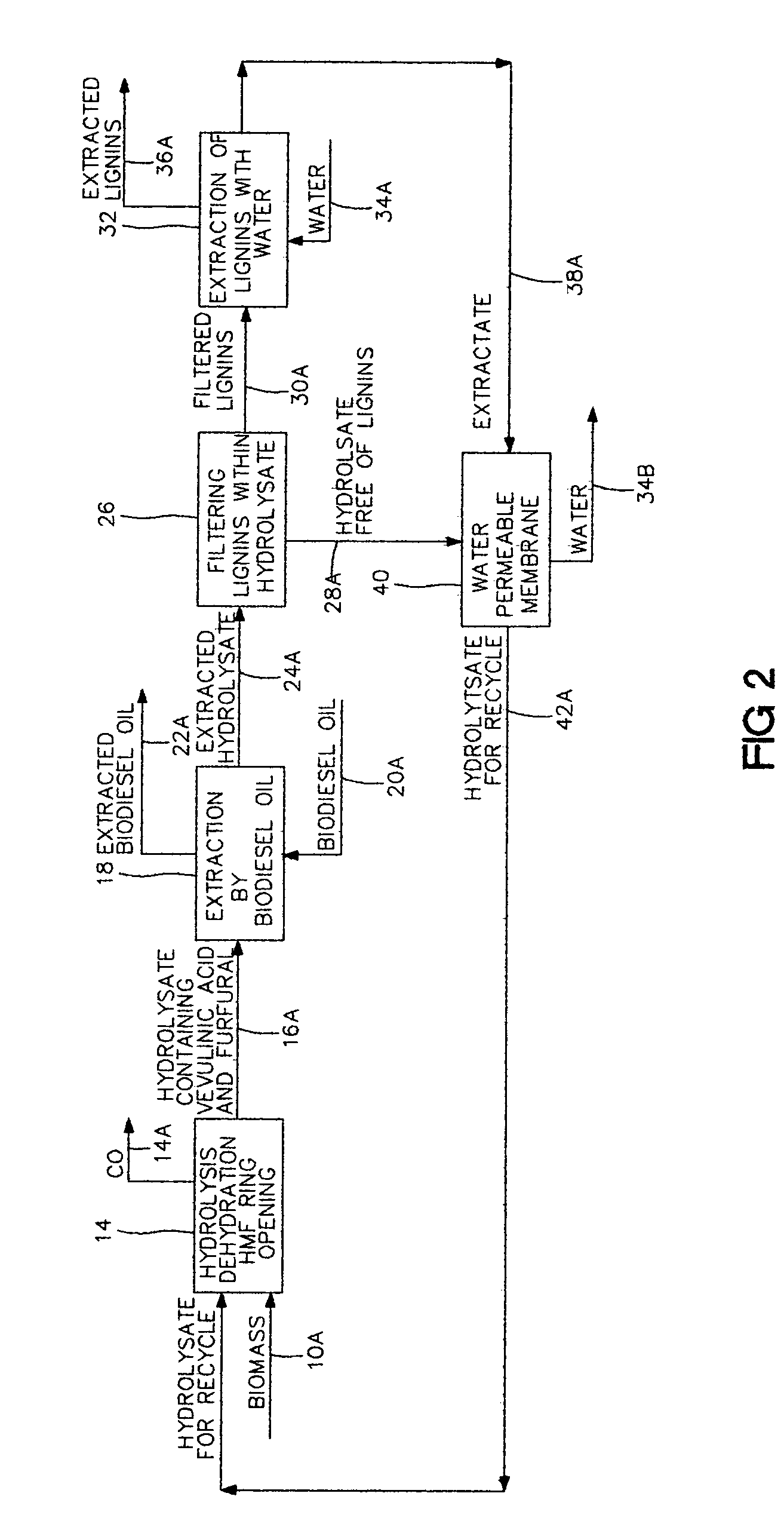Additives derived from biomass extracted by biodiesel fuel oil
a biodiesel fuel oil and biomass technology, applied in the preparation of carboxylic compounds, fuels, organic chemistry, etc., can solve problems such as unstable formic acid
- Summary
- Abstract
- Description
- Claims
- Application Information
AI Technical Summary
Problems solved by technology
Method used
Image
Examples
Embodiment Construction
[0015]The present invention, in its broadest aspect, is distinguished by a method to increase biodiesel oil content by additives derived from a biomass.
[0016]What is claimed comprises: providing a biomass, aqueous sulfuric acid, and biodiesel oil. By combining biomass with sulfuric acid, hydrolysis, transpires to form sugars within a hydrolysate. Upon formation of sugars and subjecting sugars to dehydration, furfural and hydroxymethylfurfural are formed. Hydromethylfurfural is subjected to splitting heterocyclic rings within hydroxymethylfurfural to form levulinic acid. Levulinic acid and furfural, within hydrolysate, are subject to extracting by biodiesel oil. Recycling hydrolysate resulting from extraction of levulinic acid and furfural for hydrolysis of additional biomass. Thereby biodiesel oil content is increased by additives derived from a biomass.
[0017]Key features of this invention are:
[0018]Sugars are derived from a biomass acidic hydrolysis.
[0019]Sugars are subject to dehy...
PUM
| Property | Measurement | Unit |
|---|---|---|
| Concentration | aaaaa | aaaaa |
| Content | aaaaa | aaaaa |
Abstract
Description
Claims
Application Information
 Login to View More
Login to View More - R&D
- Intellectual Property
- Life Sciences
- Materials
- Tech Scout
- Unparalleled Data Quality
- Higher Quality Content
- 60% Fewer Hallucinations
Browse by: Latest US Patents, China's latest patents, Technical Efficacy Thesaurus, Application Domain, Technology Topic, Popular Technical Reports.
© 2025 PatSnap. All rights reserved.Legal|Privacy policy|Modern Slavery Act Transparency Statement|Sitemap|About US| Contact US: help@patsnap.com



